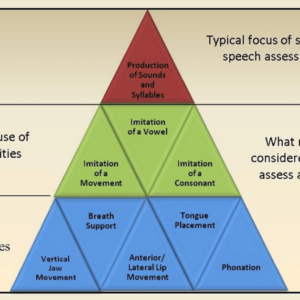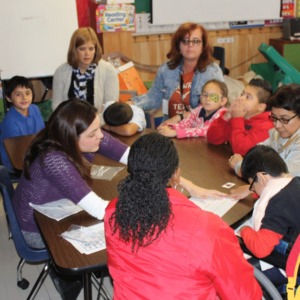Bilingual Language Evaluation Case Study: Step by Step from Referral to Report
$15.00

Course Type: Video – 1 hour
ASHA Course Code: Diversity, Equity, and Inclusion in Education, Training, Service Delivery, Public Policy – 7030
Evaluating bilingual students is challenging. In this course, we walk through the process from the initial referral through the written evaluation. We select assessment instruments, review standardized and informal measures, design a quick dynamic assessment, review the results, and write it all up.
Additional Information
| Population | School Age |
|---|---|
| Topics | Diversity, Equity, & Inclusion (DEI), Evaluations |
| Duration | 1 hour |
| Credit | .1 Continuing Education Unit |
| Format | Video |
Financial Disclosure: Ellen Kester, Ph.D., CCC-SLP. Dr. Ellen Kester is the owner of Bilinguistics and receives a salary. Bilinguistics receives royalty payments for online courses.
Non-Financial Disclosure: Ellen Kester does not have any non-financial relationships to disclose.
Bilingual students are often misdiagnosed as having language impairments when, in reality, they are demonstrating errors that are normal in the process of acquiring two languages. One of the hardest parts for speech-language pathologists is integrating the information from the two different languages to determine whether the student is making errors as a result of a language difference or a language disorder. In this workshop, we’ll demonstrate this process with a case study. We’ll start with the referral documents and show how those drive our selection of assessment tools. We’ll then use the results of the formal and informal measures to identify areas to probe further using a dynamic assessment approach. We’ll then take all of the results into account to make a diagnostic decision. Finally, we’ll write it all up into a succinct, informative report.
Evaluating bilingual students is challenging. In this course, we walked through the process from the initial referral through the written evaluation. We selected assessment instruments, reviewed standardized and informal measures, designed a quick dynamic assessment, reviewed the results, and wrote it all up.
Participants will:
Describe how speech pathologists can provide unique contributions to the curriculum.
Describe evidence-based intervention approaches for working in the classroom.
Address literacy, writing, and vocabulary goals within the context of communication goals.
Demonstrate how to maintain positive interactions with educational professionals while interacting in the classroom.
Time-Ordered Agenda:
05 minutes: Introduction to the topic
10 minutes: Reviewing referral information
10 minutes: Selecting Standardized Measures
10 minutes: Selecting Informal Measures
10 minutes: Analyzing Results and Designing Dynamic Assessment
10 minutes: Pulling the results into a concise report
05 minutes: Conclusion
Need CEUs?

 Share
Share
 Tweet
Tweet
 LinkedIn
LinkedIn
 Pin
Pin
 Email
Email





